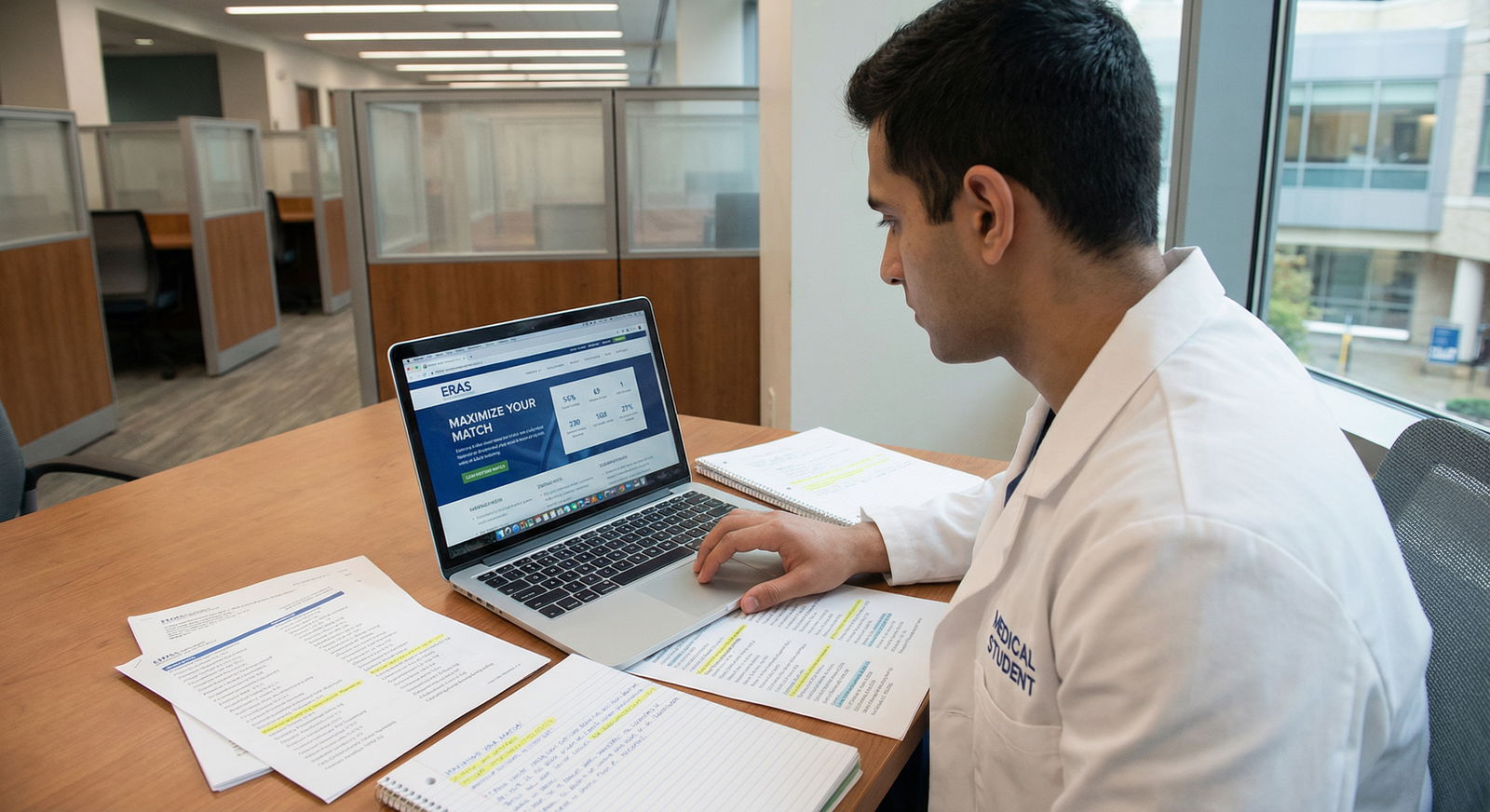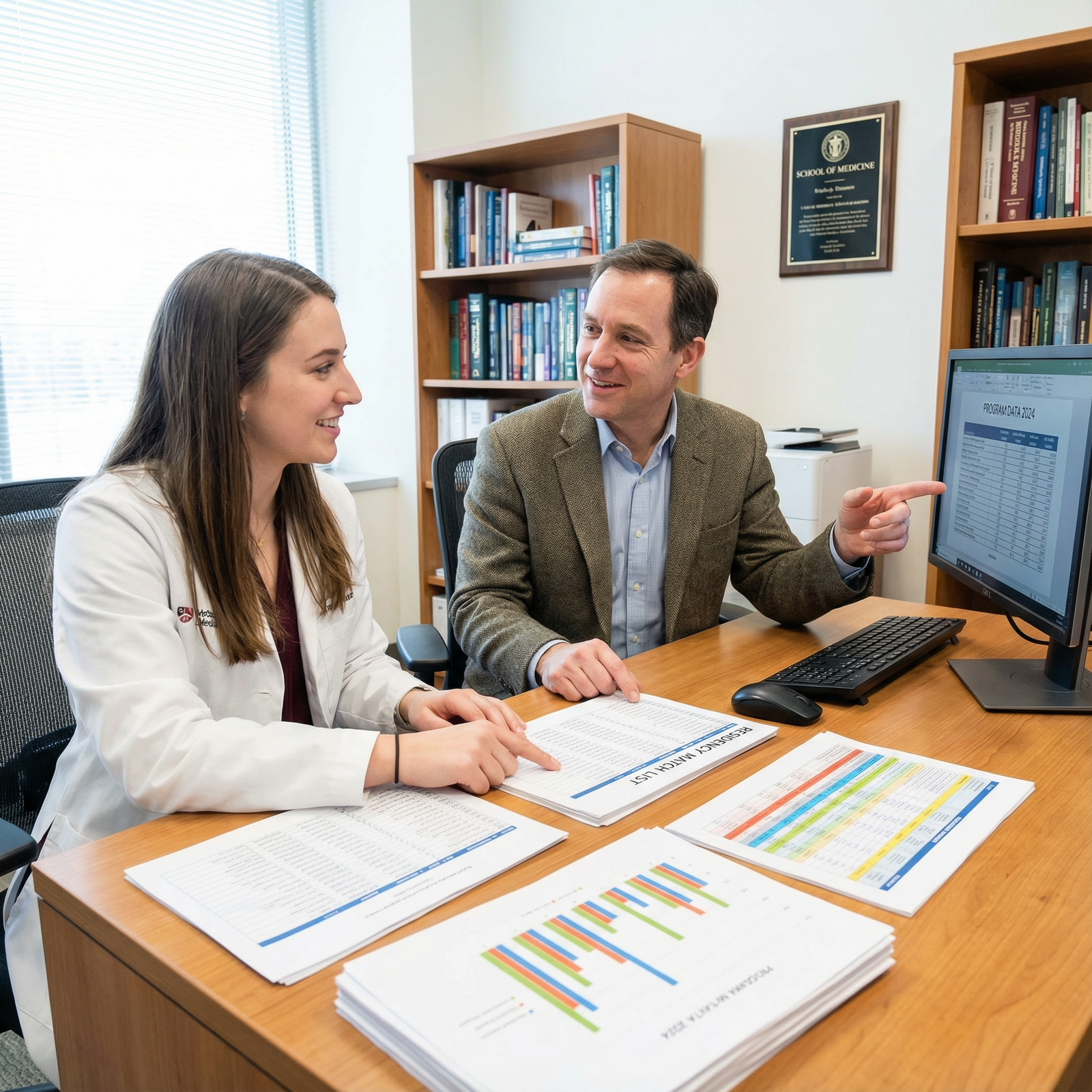Maximize Your Match: How Many Residency Programs to Apply To

Finding Your Fit: How Many Residency Programs Should You Apply To?
Navigating residency applications can feel like sailing in dense fog: high stakes, limited visibility, and countless possible routes. You’ve invested years of effort in your medical career, and now you’re facing a deceptively simple question with big consequences:
How many residency programs should I apply to?
The answer is not a single number, but a personalized range based on your specialty, competitiveness, personal circumstances, and risk tolerance. Apply to too few programs and you may jeopardize your chances of matching. Apply to too many and you risk financial strain, burnout, and unfocused, lower‑quality applications.
This guide will walk you through a structured, evidence‑informed way to determine your target number of applications and build a list that maximizes your chances of matching while supporting your long‑term career satisfaction.
Understanding the Residency Application Landscape
Before deciding on how many programs to include, it’s crucial to understand the broader residency application system and what actually drives match outcomes.
How the Match Works—and Why It Matters
The National Resident Matching Program (NRMP) uses an applicant‑favoring algorithm to match applicants and programs based on ranked preferences. Two key points for your application strategies:
- The algorithm favors longer rank lists: In general, the more programs you rank where you would be happy to train, the higher your chance of matching.
- The algorithm can only work with programs that rank you back, which requires:
- A complete, competitive application
- An interview invitation
- A successful interview experience
So the real question isn’t just “How many programs should I apply to?” but:
How many realistic programs do I need to apply to in order to get enough interviews to create a safe and satisfying rank list?
Core Factors That Influence Match Chances
Several elements combine to determine how many applications you likely need:
Personal and Academic Profile
- USMLE or COMLEX scores (and whether any exams were failed or remediated)
- Clerkship grades and class rank (if provided)
- Strength of letters of recommendation
- Research, leadership, and extracurricular experiences
- Red flags (gaps, professionalism concerns, previous attempts)
Specialty Competitiveness
- Highly competitive: Dermatology, plastic surgery, neurosurgery, orthopedic surgery, ENT, integrated vascular/cardiothoracic surgery
- Moderately competitive: Emergency medicine, anesthesiology, general surgery, OB/GYN, psychiatry, radiology
- Less competitive: Internal medicine, family medicine, pediatrics, pathology, PM&R (varies regionally and by year)
Applicant Type and Visa Status
- US MD, US DO, US‑citizen IMG, non‑US IMG
- Need for J‑1 or H‑1B visa sponsorship
- Graduated vs current student
Each of these can push your recommended application numbers up or down. For example, a US MD senior with strong scores applying to family medicine will typically need far fewer applications than a non‑US IMG with visa needs applying to radiology.
Assessing Personal Factors That Shape Your Application Strategy
The “right” number of programs is personal. Consider these factors honestly to refine your target range.
1. Specialty Choice and Competitiveness
Your chosen specialty is one of the largest drivers of how many residency programs you should apply to.
Highly Competitive Specialties
Includes dermatology, plastic surgery, neurosurgery, orthopedic surgery, otolaryngology, integrated vascular/cardiothoracic surgery, and (in many cycles) radiology and some surgical subspecialties.
Typical range:
- US MD/DO seniors with strong applications: 40–70 programs
- Applicants with weaker metrics or IMGs: 60–100+ programs
Why so many?
- Fewer positions overall
- Many applicants per spot
- Programs often have strict screening filters (e.g., score cutoffs, research expectations)
Example:
A US MD applicant with 255+ Step 2, 2–3 publications, and strong letters for dermatology might target 40–50 programs nationally. An IMG with similar interests but lower scores and visa needs might need to apply broadly to 80–100+ programs that historically interview IMGs.
Moderately Competitive Specialties
Includes emergency medicine, anesthesia, OB/GYN, general surgery, psychiatry (increasingly competitive), and some years internal medicine in popular cities.
Typical range:
- Strong US MD/DO seniors: 25–40 programs
- Applicants with weaknesses or IMGs: 40–60+ programs
Example:
A US DO student applying to anesthesiology with solid but not stellar scores, strong letters, and no research might reasonably target 35–45 programs, with a mix of academic and community hospitals in different regions.
Less Competitive Specialties
Includes family medicine, internal medicine (community and many non‑urban programs), pediatrics, pathology, and many PM&R programs, depending on the cycle.
Typical range:
- Strong US MD/DO seniors: 15–25 programs
- Applicants with multiple red flags or IMGs: 25–40+ programs
Example:
A US MD senior interested in family medicine with average scores and strong primary care experiences might comfortably apply to 18–25 programs focused on their preferred region.
These ranges are broader and higher than the original 8–30 guidance because the number of applications per applicant has increased over time. Always pair this with your dean’s office and specialty‑specific advisors’ latest data.

2. Quality vs Quantity: Avoiding Application Overload
While it’s tempting to apply to “everywhere,” more is not always better.
Risks of Applying to Too Many Programs
Shallow, generic applications
- One-size-fits-all personal statements that don’t resonate
- Missed opportunities to highlight your specific fit for each program or region
Burnout and disorganization
- Difficulty tracking requirements, emails, and deadlines
- Rushed or poorly prepared interviews
Financial strain
- ERAS fees climb quickly with higher numbers
- More invited interviews can mean higher travel or virtual interview prep costs
Benefits of a Focused, Thoughtful List
- Stronger program‑specific personal statements
- Ability to research and demonstrate genuine interest (e.g., pre‑interview emails, second looks where appropriate)
- More time to prepare for each interview thoroughly
The goal is to find a balanced range: broad enough to be safe, but narrow enough that you can submit high‑quality, personalized applications.
3. Geographic and Lifestyle Considerations
Your location flexibility significantly impacts how many residency programs you should apply to.
Ask yourself:
- Are you willing to move anywhere in the country, or do you need to stay within one region?
- Do you have family, partner, or caregiving obligations that limit relocation?
- Do you have strong preferences about:
- Urban vs rural settings
- Academic medical center vs community teaching hospital
- Climate or cost of living
High geographic flexibility
→ You can often apply to fewer programs for the same match probability because you are open to more options.
Narrow geographic targets (e.g., one metro area or one state)
→ You may need to apply to more programs to compensate for fewer total options.
Example:
Two applicants with similar competitiveness in internal medicine:
- Applicant A: Willing to go anywhere in the US → 20–25 well‑chosen programs may suffice.
- Applicant B: Needs to stay within one city or one small state → Might need to apply to 30–40 programs in that area and nearby regions, including a mix of academic and community programs.
4. Financial Considerations and Budgeting
Application and interview costs can be substantial. Before you decide on a number, outline a realistic budget:
- ERAS application fees (tiered, increasing per program after certain cutoffs)
- Supplemental applications (for some specialties/programs)
- Interview costs
- Most interviews are now virtual, but there may still be:
- Time off from rotations
- Travel for a small number of in‑person visits or second looks (if you choose)
- Clothing, technology, and professional prep expenses
- Most interviews are now virtual, but there may still be:
Create a budget before finalizing how many residency programs you should apply to. If your ideal number exceeds your budget, talk with your dean’s office about fee assistance, or adjust your specialty/geographic strategy.
Researching and Selecting the Right Residency Programs
Once you understand your competitiveness and constraints, the next step is to identify which programs to apply to—not just how many.
1. Use Trusted Online Databases and Match Data
Start with broad tools, then narrow strategically:
FREIDA (AMA)
- Filter by specialty, state, program type, size, and fellowship opportunities.
- Check visa sponsorship, required exams, and prior training preferences.
NRMP and Specialty‑Specific Data
- Review the “Charting Outcomes” and “Program Director Survey” for your specialty.
- Look at interview numbers and match probabilities at different application volumes.
Program Websites
- Verify eligibility criteria (IMG policies, visa sponsorship, graduation year limits).
- Explore curriculum, call schedules, and educational philosophy.
2. Leverage Your Network for Insider Perspective
Your network often knows nuances that websites do not capture.
Talk to:
- Clerkship and specialty advisors
- Program directors or associate program directors at your home institution
- Residents (especially near‑peer residents who recently matched)
- Recent graduates from your medical school in your target specialty
Ask targeted questions:
- “For someone with my scores and experiences, how many programs would you suggest?”
- “Which programs are realistic ‘reach,’ ‘target,’ and ‘safety’ options for me?”
- “Are there programs I should avoid due to poor reputation, instability, or fit issues?”
3. Evaluate Program Fit Beyond Reputation
Do not rely solely on brand name or prestige. Consider:
Mission and values
- Community‑focused vs research‑heavy
- Commitment to underserved populations
- Emphasis on wellness and diversity
Curriculum and training environment
- Inpatient vs outpatient balance
- Subspecialty exposure and fellowship track record
- Procedural volume and autonomy
Faculty, mentorship, and culture
- Access to mentors in your career interest area
- Resident satisfaction and retention
- Work‑life balance and call structure
Programs where your goals and their strengths align are where your application will be the most compelling—and where you are most likely to thrive.
Honestly Evaluating Your Application Strengths and Weaknesses
Self‑assessment is essential to decide how many residency programs you should apply to and how to structure your list.
1. Academic Metrics (USMLE/COMLEX, Grades, Class Rank)
Consider:
- Are your Step 2/Level 2 scores above, at, or below the recent matched averages for your specialty?
- Do you have any failed attempts that could raise red flags?
- Are there honors in core clerkships relevant to your specialty?
Impacts on application numbers:
- Above average: You may be able to apply toward the lower end of suggested ranges.
- Average or slightly below: Aim for the mid‑to‑upper end of the range.
- Multiple red flags: Apply toward the higher end and strongly consider including less competitive or backup specialties.
2. Clinical and Research Experiences
Programs look beyond scores:
- Sub‑internships or away rotations in the specialty
- Strong, specialty‑specific letters of recommendation
- Research productivity (especially important in academic and competitive specialties)
- Leadership, teaching, and community service
If you have strong experiences and advocacy (e.g., a program director writing “must interview” in your letter), you may not need to apply to as many programs as your scores alone might suggest.
3. Backup Strategies and Parallel Plans
For some applicants, applying to more than one specialty is a smart risk‑management move.
Examples:
- Applying to a highly competitive specialty (e.g., dermatology) and a categorical backup (e.g., internal medicine)
- Applying to both anesthesia and internal medicine in the same cycle if your metrics are borderline
If you pursue a parallel plan, you may need to adjust program counts per specialty to keep total applications—and total cost—manageable (e.g., 40 in your primary specialty and 20–25 in your backup).
Discuss this carefully with advisors to avoid sending mixed signals to programs within the same institution.
A Practical Framework: Turning Principles into a Concrete List
Here is a step‑by‑step approach to determine how many residency programs you should apply to and which ones.
Step 1: Define Your Specialty and Competitiveness Category
With your advisor, honestly categorize yourself as:
- Strong for this specialty
- Average/typical candidate
- Below average or higher risk
Then identify your specialty competitiveness level (high, moderate, or low) from earlier.
Combine these to identify your starting application range (e.g., 30–45 programs for an average candidate in a moderately competitive specialty).
Step 2: Set Preliminary Ranges by Tier
Divide your potential programs into tiers:
Reach Programs (Top Tier)
- Prestigious/academic centers, highly desirable locations, or where your metrics are below their typical averages.
- Aim for 20–30% of your list.
Target Programs (Realistic Match)
- Programs where your metrics and experiences are close to or slightly above their recent matched cohorts.
- Aim for 50–60% of your list.
Safety Programs (Solid Backup)
- Programs that have historically taken applicants with similar or weaker profiles than yours.
- Aim for 15–25% of your list.
Step 3: Build and Refine Your List
Using FREIDA, NRMP data, and advice from mentors:
- Generate a long list of programs where you are eligible (visa policies, graduation year, exam requirements).
- Flag programs with:
- Strong alignment with your interests
- History of taking graduates from your school or with your profile
- Desired geographical or cultural features
- Trim programs where:
- Your values or goals clearly don’t align
- Location is unacceptable to you
- Culture or reputation raises concerns
Aim to end with a list that fits within your target range (e.g., 35–45 programs) and respects your budget.
Step 4: Set a Firm Maximum—and Honor It
Based on:
- Your financial budget
- Your capacity to write tailored personal statements
- Your ability to track and prepare for interviews
Set a hard cap (e.g., “I will not submit more than 45 applications this cycle”). Once you reach this number, resist the urge to panic‑apply more unless new, strong data emerges (such as very few interview offers later in the season, in which case talk with advisors about targeted late applications).

Putting It All Together: Example Scenarios
To see how these principles work in practice, consider these brief scenarios.
Scenario 1: US MD, Strong Applicant, Moderately Competitive Specialty
- Specialty: Emergency Medicine
- Scores: Above national average
- Experiences: 2 EM sub‑Is, strong SLOEs, leadership in EM interest group
- Geography: Flexible to most regions
Suggested strategy:
- Target 25–35 programs
- 6–8 reach, 14–20 target, 5–7 safety
- Emphasize programs with robust trauma and critical care exposure
Scenario 2: Non‑US IMG, Moderately Competitive Specialty, Visa Needed
- Specialty: Psychiatry
- Scores: Slightly below average for matched US MD
- Experiences: Strong psychiatry rotations, good letters, some community mental health work
- Geography: Open to anywhere; needs J‑1 visa
Suggested strategy:
- Target 40–60+ programs
- Use FREIDA to filter for:
- Programs that sponsor J‑1 visas
- Programs with recent IMG matches
- Consider adding a small number of internal medicine or family medicine programs if risk tolerance is low
Scenario 3: US DO, Applying to Less Competitive Specialty with Red Flags
- Specialty: Family Medicine
- Scores: Average; one failed COMLEX attempt later passed
- Experiences: Robust primary care exposure, strong narrative letters
- Geography: Wants to stay in one broad region (e.g., Midwest)
Suggested strategy:
- Target 25–35 programs within desired region
- Emphasize community‑based and osteopathic‑friendly programs
- Make sure several programs are “safeties” where historical data suggests they are open to applicants with exam retakes
FAQs: Deciding How Many Residency Programs to Apply To
1. Is there a general rule for how many residency programs to apply to?
For most specialties, a reasonable starting framework is:
- Highly competitive specialties: 40–70+ programs (more for IMGs or applicants with red flags)
- Moderately competitive specialties: 25–45 programs
- Less competitive specialties: 15–30 programs
Your individual number should be refined based on your competitiveness, geographic flexibility, and budget. Work closely with your school’s advisors and use specialty‑specific match data.
2. Can applying to too many programs hurt my chances of matching?
Indirectly, yes. While there is no penalty for a high number of applications, over‑applying can:
- Lead to rushed, generic personal statements
- Make it harder to research and prepare for each interview
- Increase stress and financial burden
Programs can sense when applicants haven’t done their homework. It’s better to apply to a thoughtful, well‑researched list than an excessively long, unfocused one.
3. How many interviews do I need to feel “safe” for the Match?
This varies by specialty and applicant type, but NRMP data suggests:
- For many specialties, having 10–14 ranked programs often corresponds to a high probability of matching as a US senior.
- Competitive specialties may require fewer interviews (because applicants are very strong) but those interviews are harder to obtain.
- IMGs and applicants with red flags often need more interviews to approach similar match probabilities.
The key is to aim for enough interviews to rank a solid list of programs where you would genuinely be happy to train.
4. When should I adjust my strategy during application season?
Reassess if:
- You receive very few or no interview invitations by mid‑to‑late October (for most specialties)
- You notice that similarly qualified classmates are getting more interviews
At that point:
- Speak urgently with your dean’s office or specialty advisor.
- Consider sending targeted late applications to additional programs known to be IMG‑friendly or to review applications holistically.
- Reflect honestly on backup specialties if you did not already pursue a parallel plan.
5. How early should I start researching residency programs?
Ideally:
- Late MS2 to early MS3: Start learning about specialties and their competitiveness.
- Mid‑MS3: Narrow down your specialty choices; attend interest group events and talk with residents.
- Late MS3 to early MS4: Build and refine your program list using FREIDA, NRMP data, and advisor input.
Starting early allows time for targeted away rotations, research, and networking, which can meaningfully strengthen your application and influence how many residency programs you need to apply to.
Finding the right number of residency programs to apply to is about strategic balance: aligning your competitiveness, specialty choice, geographic preferences, and budget with a realistic, well‑researched list. By combining honest self‑assessment with data‑driven planning and thoughtful mentorship, you can build an application strategy that maximizes both your chance of matching and your long‑term satisfaction in your medical career.

SmartPick - Residency Selection Made Smarter
Take the guesswork out of residency applications with data-driven precision.
Finding the right residency programs is challenging, but SmartPick makes it effortless. Our AI-driven algorithm analyzes your profile, scores, and preferences to curate the best programs for you. No more wasted applications—get a personalized, optimized list that maximizes your chances of matching. Make every choice count with SmartPick!
* 100% free to try. No credit card or account creation required.



















